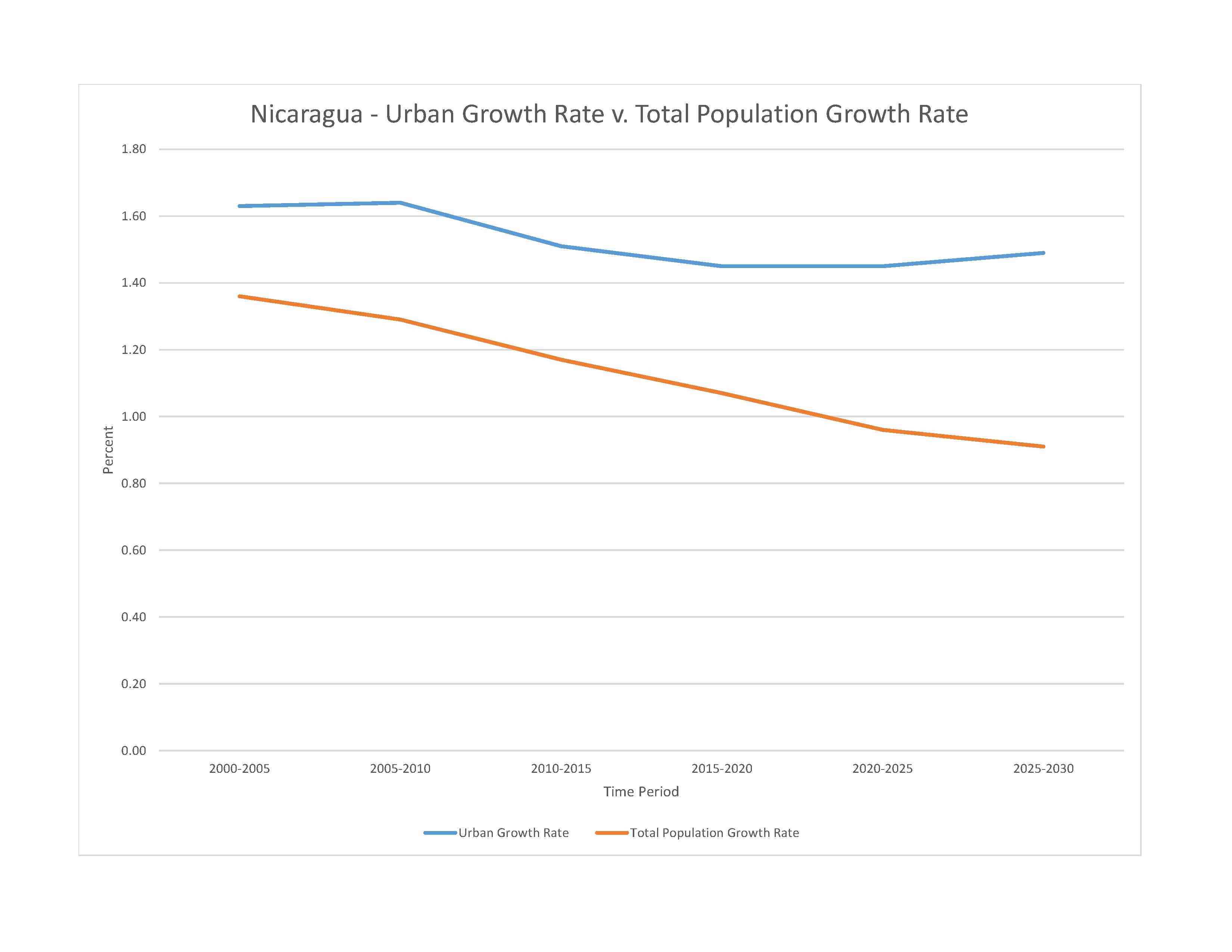
6,359,689 (2023 est.)
noun: Nicaraguan(s)
adjective: Nicaraguan
Mestizo (mixed Amerindian and White) 69%, White 17%, Black 9%, Amerindian 5%
Spanish (official) 95.3%, Miskito 2.2%, Mestizo of the Caribbean coast 2%, other 0.5%; note - English and indigenous languages found on the Caribbean coast (2005 est.)
major-language sample(s):
La Libreta Informativa del Mundo, la fuente indispensable de información básica. (Spanish)
The World Factbook, the indispensable source for basic information.
Spanish audio sample:
Roman Catholic 50%, Evangelical 33.2%, other 2.9%, none 0.7%, unspecified 13.2% (2017 est.)
Despite being one of the poorest countries in Latin America, Nicaragua has improved its access to potable water and sanitation and has ameliorated its life expectancy, infant and child mortality, and immunization rates. However, income distribution is very uneven, and the poor, agriculturalists, and indigenous people continue to have less access to healthcare services. Nicaragua's total fertility rate has fallen from around 6 children per woman in 1980 to below replacement level today, but the high birth rate among adolescents perpetuates a cycle of poverty and low educational attainment.
Nicaraguans emigrate primarily to Costa Rica and to a lesser extent the United States. Nicaraguan men have been migrating seasonally to Costa Rica to harvest bananas and coffee since the early 20th century. Political turmoil, civil war, and natural disasters from the 1970s through the 1990s dramatically increased the flow of refugees and permanent migrants seeking jobs, higher wages, and better social and healthcare benefits. Since 2000, Nicaraguan emigration to Costa Rica has slowed and stabilized. Today roughly 300,000 Nicaraguans are permanent residents of Costa Rica - about 75% of the foreign population - and thousands more migrate seasonally for work, many illegally.
0-14 years: 24.16% (male 784,847/female 751,616)
15-64 years: 69.36% (male 2,134,871/female 2,276,522)
65 years and over: 6.48% (2023 est.) (male 180,441/female 231,392)
total dependency ratio: 54.4
youth dependency ratio: 46.4
elderly dependency ratio: 8
potential support ratio: 12.6 (2021 est.)
total: 28.5 years (2023 est.)
male: 27.6 years
female: 29.4 years
0.97% (2023 est.)
16.6 births/1,000 population (2023 est.)
5.1 deaths/1,000 population (2023 est.)
-1.8 migrant(s)/1,000 population (2023 est.)
the overwhelming majority of the population resides in the western half of the country, with much of the urban growth centered in the capital city of Managua; coastal areas also show large population clusters
urban population: 59.8% of total population (2023)
rate of urbanization: 1.45% annual rate of change (2020-25 est.)

1.095 million MANAGUA (capital) (2023)
at birth: 1.05 male(s)/female
0-14 years: 1.04 male(s)/female
15-64 years: 0.94 male(s)/female
65 years and over: 0.78 male(s)/female
total population: 0.96 male(s)/female (2023 est.)
19.2 years (2011/12 est.)
note: data represents median age at first birth among women 25-29
78 deaths/100,000 live births (2020 est.)
total: 14.7 deaths/1,000 live births (2023 est.)
male: 16.2 deaths/1,000 live births
female: 13 deaths/1,000 live births
total population: 74.5 years (2023 est.)
male: 73 years
female: 76.2 years
1.85 children born/woman (2023 est.)
0.9 (2023 est.)
80.4% (2011/12)
improved: urban: 97.5% of population
rural: 62.6% of population
total: 83.2% of population
unimproved: urban: 2.5% of population
rural: 37.4% of population
total: 16.8% of population (2020 est.)
8.6% of GDP (2020)
1.67 physicians/1,000 population (2018)
0.9 beds/1,000 population (2017)
improved: urban: 89.9% of population
rural: 66.5% of population
total: 80.3% of population
unimproved: urban: 10.1% of population
rural: 33.5% of population
total: 19.7% of population (2020 est.)
degree of risk: high (2023)
food or waterborne diseases: bacterial diarrhea, hepatitis A, and typhoid fever
vectorborne diseases: dengue fever and malaria
23.7% (2016)
total: 3.69 liters of pure alcohol (2019 est.)
beer: 1.57 liters of pure alcohol (2019 est.)
wine: 0.02 liters of pure alcohol (2019 est.)
spirits: 2.1 liters of pure alcohol (2019 est.)
other alcohols: 0 liters of pure alcohol (2019 est.)
56% (2023 est.)
4.6% of GDP (2020 est.)
definition: age 15 and over can read and write
total population: 82.6%
male: 82.4%
female: 82.8% (2015)
NOTE: The information regarding Nicaragua on this page is re-published from the 2024 World Fact Book of the United States Central Intelligence Agency and other sources. No claims are made regarding the accuracy of Nicaragua 2024 information contained here. All suggestions for corrections of any errors about Nicaragua 2024 should be addressed to the CIA or the source cited on each page.
This page was last modified 04 May 24, Copyright © 2024 ITA all rights reserved.